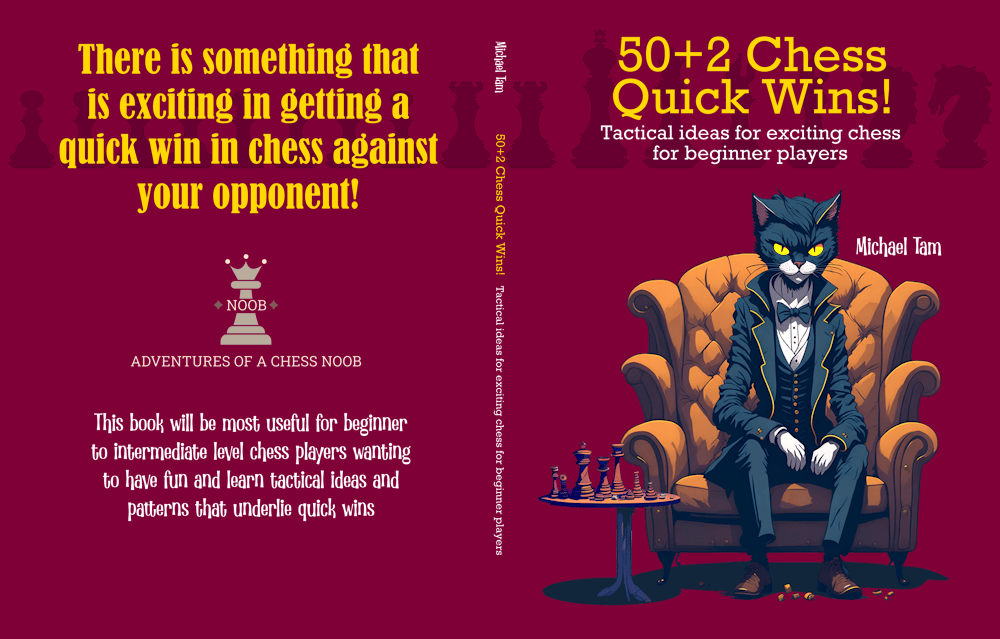
von Hennig Gambit | Torpedo the Caro-Kann Defense! 🫡♟️
#carokann #vonhenniggambit
For a while now, my favourite approach with the white pieces against the Caro-Kann Defense is the lovely von Hennig Gambit (1. e4 c6 2. d4 d5 3. Nc3 dxe4 4. Bc4!?). I first came across this opening almost two years ago, when I learnt about and achieved the famous 8-move checkmate trap line. However, the von Hennig Gambit isn’t just a one-trick pony and is genuinely effective! According to the Lichess community database, White has a substantial win ratio advantage on (4. Bc4) of 54% vs Black (42%)! According to OpeningTree.com, I’ve played the von Hennig Gambit 29 times and have won 64% of games! Despite the von Hennig Gambit having been featured by many chess YouTubers, it remains rarely seen – it is played by White only 2% of the time from the position!
![]()
A historical note:
Heinrich (Heinz) von Hennig (1883-1947) was a German chess player, who was also a naval officer and U-boat commander in WWI. Not a whole lot is recorded about von Hennig in chess publications, at least, not in English. He doesn’t have his own Wikipedia page in English, and even one of the main resources that I use for historical research, The Oxford Companion to Chess (2nd Edition) by Hoopers and Whyld, does not contain an entry. I noticed, further, that in some chess social media, the wrong portrait has been used as there was another Heinrich von Hennig, a German politician, who was a public figure from the early 19th century.
However, due to his military service in WWI and WWII, records and narratives exist from those sources! The German Wikipedia has a brief biography and I’ve read some records from the British perspective. Von Hennig was the commander of the submarine U-18 and shortly after the outbreak of WWI, he attempted to scout the Scarpa Flow, location of the main British naval bases. However, his sub was discovered, rammed, and sunk, and he and his crew were taken as prisoners of war in November 1914. The following year, he and two other officers made a daring escape from the POW camp and had arranged to be picked up by another U-boat through previously sending covert messages. Their plan failed, however, and von Hennig was recaptured and remained in captivity until the end of the war.

![]()
Von Hennig was a strong player and learned to play chess as a naval cadet. Extraordinarily for someone for whom little is written, he has two lines named after him, the von Hennig Gambit in the Caro-Kann Defense, and the Schara-Hennig Gambit variation in the Tarrasch Defense. See below two winning games of the von Hennig Gambit played by von Hennig himself:
![]()
In this game, after (4… Nf6 5. f3), Black opted to keep their won pawn with (5… Bf5), rather than the more usual (5… exf3). Caro-Kann players who might be wary of trading away the pawn (or who might be aware that that path leads to a trap line) are often inclined to keep the tension by double-defending the e4-pawn. This move looks quite sensible, but as we’ll see, it permits White to make an aggressive counterattack and make use of their advantage in tempo!

The best move is to immediately strike out with (6. g4) attacking Black’s bishop! After Black responds with (6… Bg6), keeping their bishop’s defence of their e4-pawn, the g-pawn steps forward again (7. g5), now attacking their f6-knight! In essence, it isn’t actually possible for Black to hold onto the won pawn and after (7… Nd5 8. Nxe4), Black decided to trade away their bishop in the sequence (8… Bxe4?), which was a mistake!
From this position, Black never equalises. White has an advantage in development, space, and central control. Stockfish can find the most accurate moves for Black which limits the disadvantage, but many of these pawn moves are not intuitive. On move 15, we’ve entered the middlegame as I’ve castled long. Despite material equality, Stockfish evaluates the position at [+2.8]! Next move, Black hung their g5-bishop attempting to develop their knight (16… Nf6? 17. Nxg5) [+6], and then rattled, blundered further material with (17… Nxe4??) [+10.5]! GG!
The big takeaway from this game is to try the von Hennig Gambit against the Caro-Kann Defense! It’s a genuinely good approach to take the Caro-Kann player out of their comfort zone, and great if you like aggressive romantic chess!
Game: https://www.chess.com/analysis/game/live/112316443179



